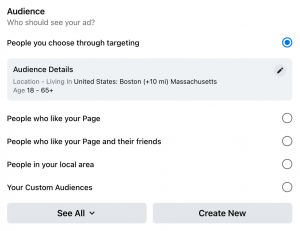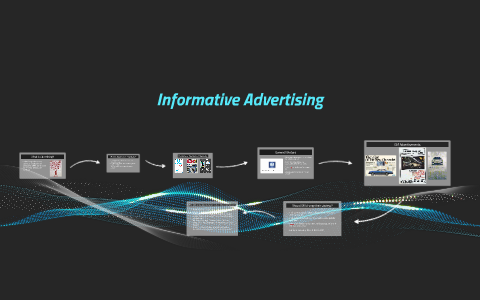
You can have many challenges and benefits by running a local campaign. If you're not yet familiar with the benefits of running such a campaign, read on to learn more. Here are three things you need to keep in mind when planning a local PPC strategy. Read on to find out how you can make the most of your local PPC strategy. Make sure to optimize your strategy for the best results. You'll have a campaign that is successful.
Google Ads' response to brick-and-mortar stores' need for foot traffic
Google's new attribution metric links online actions to foot traffic as more companies opt to advertise online. This metric allows you to evaluate the effectiveness of advertising by linking online actions with offline actions, such as conversions, purchases, and sales. Google Ads dashboards display metrics for foot traffic attribution, such as ad spend by channel, click-through rate, and conversion value.

Google Ads can only be effective if you track customer visits to your store. Google Ads are a powerful tool to increase store visits. Many customers do their research online before visiting a brick-and–mortar store. An advertiser can track store visits and optimize their campaigns to improve omnichannel performance.
Running a local campaign has many benefits
While the process of running a local campaign is largely labor-intensive, it does have its benefits. To create forms for donors, volunteers, and other supporters, you can use your design intuition. You can also harness the power of word-of-mouth to generate a buzz around the campaign. Although establishing yourself is the first step, you can make it easier with the help and support of others. Find out the many benefits of running your own local campaign.
It is essential to research the local government before you start a campaign. Find out about the latest plans and initiatives in your area and identify the key players. You can learn about the city's current agenda and establish yourself in local politics. You can also get endorsements if you are familiar with the incumbents. Local citizens can support you by attending town council meetings, referendums and other community events.
The challenges of running a local election
Although local campaigns may be smaller than national ones, they still face many challenges. They need to reach fewer people and often run for shorter times. Despite this, running a local campaign is no less demanding on a candidate and his supporters. Planning and managing a campaign takes planning, preparation, and adequate human and financial resources. Independent campaigns may not be supported by the local party committee.

Before you decide to run for office consider the demographics, needs and preferences of your target voters. You'll need to find out what each demographic prefers, what their interests are, and what they'd like to see in their local government. Then, determine how to reach them. A good campaign manager knows their candidates and is familiar with the local demographic. The key to managing upward is to get to know your candidates on an individual level.
FAQ
What should you know about radio advertising
Understanding how different media interact with each other is crucial. All media forms can be considered complementary, rather than competing.
Radio is best utilized as an extension to TV advertising. It complements TV by reinforcing key messages and providing additional information.
Radio listeners are often not able to handle long TV commercials. Radio ads are usually shorter and less expensive.
Is it possible to get traffic for free?
Free Traffic refers to the traffic that comes directly from organic search results without paying for ads. This type of traffic is called natural or organic traffic. You can get traffic free of charge by using article marketing, social media marketing and blogging.
Article Marketing is an excellent way to generate free traffic. Paid ads have a higher CPC, but the CPC is typically much lower than paid ads. Article marketing is also referred to as content marketing.
Social Media Marketing – Social media platforms like Facebook, Twitter and LinkedIn let you promote your business via advertising. You can use these platforms to post updates, share photos and build relationships with people who may become potential customers. Many businesses choose to pay for ad space on social media websites because they want to reach a wider audience at a lower price.
Blogging - Blogging is another great way to generate free traffic. Writing quality content that people like reading will help you attract visitors. You can sell products and services once you have attracted visitors to your blog.
Email Marketing – Email marketing has been around ever since the dawn of the Internet. However, it remains one of your best methods to drive traffic to you website. It is a great way to increase your subscriber base and sell products.
What is advertising's basic purpose?
Advertising isn’t about selling products.
Advertising is all about communicating ideas and values with people who are already interested. Advertising is about changing minds and attitudes. It's about building connections.
It's all about helping people feel good.
If you don't understand your customers' needs, you can't market to them.
Before you begin any advertising campaign, it is important to understand your customers' needs, wants, and buying patterns.
This will allow you to create ads that resonate with your target audience.
How do I choose my target audience?
Start with yourself and those close to you. If you don't know where to begin, ask yourself, "who am I trying to reach?"
Ask yourself these questions: Who are the most influential people in my industry? What are the problems they face daily? Who are my top-ranking people? You can find them online.
Take a look back at how you started your company. Why did you begin? How did you solve the problem?
These answers will help you identify who your ideal clients are. They will also reveal their personality and reasons for buying from them.
It is also possible to look at the websites and social networks pages of your competitors to get insight into who they cater.
Once you have identified your target customers you will need to choose the channel to reach them. If your company offers services to real estate agents you might make a website that targets home buyers.
If you provide software to small businesses, you could develop a blog targeting those companies' owners.
A Facebook page for teens could be set up if you are a clothing seller. If you own a restaurant, you can set up a twitter account to provide information for parents searching for child-friendly options.
This is the point: There are many ways to communicate your message.
What should you know about internet marketing?
Internet advertising is an essential part of every business strategy. It is a cost-effective way for companies to reach potential customers. There are many options for internet advertising. Some are free, while others require payment.
There are also several ways to advertise on the internet, including banner ads, pop-up ads, search engine optimization (SEO), pay-per-click (PPC) advertisements, social media marketing, e-mail marketing, and mobile marketing. Each method offers its own advantages and disadvantages.
Advertising what is it?
Advertising is an art form. Advertising is more than selling products. It's about building emotional connections between brands and people.
Advertising is about storytelling and using images to communicate ideas.
Communication must be clear and persuasive. Also, you must share a story which resonates with your target markets.
Advertising is thus different from other forms, such public speaking, writing, and presentations.
You are building a brand identity when you run a successful advertising campaign.
This is how memorable you can be. You become someone that people remember.
What do you need to know about print advertising?
Print advertising is an effective medium for communicating with consumers. It is used by many companies for promoting products and services. Its main purpose is to grab the attention of consumers.
Print ads are usually short (one page) and contain text, pictures, logos, and other graphics. They may also include sound, animation, video, and hyperlinks.
The following categories are the most common types of print advertisements:
1. Brochures are large-format printed materials that are designed to draw people into shops. They are often filled with colorful images and catchy designs.
2. Catalogues- These are smaller versions and variants of brochures. These are typically sent to customers who ask for specific information.
3. Flyers - These small pieces of paper are distributed at events like fairs and concerts. If they are given out at retail outlets, they can be obtained for free, but you must pay for them.
4. Posters - These are larger versions of flyers. They are placed on walls, fences, buildings and other surfaces. They are typically created using computer software programs that aim to attract the attention of passersby.
5. Direct mail: These are postcards or letters that are sent directly by post to potential customers. These are sent periodically by companies to remind current customers about their business.
6. Newspaper ads - These ads are published in magazines and newspapers. They are usually very long and contain text and images.
Statistics
- It's 100% reliant on your website traffic. (quicksprout.com)
- Nonetheless, advertising spending as a share of GDP was slightly lower – about 2.4 percent. (en.wikipedia.org)
- Worldwide spending on advertising in 2015 amounted to an estimated US$529.43 billion. (en.wikipedia.org)
- Google will display whichever ad type (CPM or CPC) is expected to earn more revenue for the publisher, which is in Google's best interest since they take a 32% share of the revenue. (quicksprout.com)
External Links
How To
How to run paid ads
Paid advertising can be defined as any marketing activity in which you pay money. This could include advertising in magazines and newspapers, buying ads space on websites, or hiring someone to promote your business online. There are many forms of paid advertising. These include social media marketing, email marketing and display advertising.
To ensure your campaign works well, you should know how much it costs and what kind of results you expect. You need to assess whether the ROI (return on investment) is sufficient to justify the cost.
Before you launch a paid campaign for advertising, you must first establish if potential customers are interested in your product or services. You can start by sharing your message via social media, posting flyers and making announcements in your local area.
Once you know your target audience, you can decide on the best way to reach them. Advertise in local newspapers if you are selling organic foods. If you sell cosmetics, advertising on television or radio might be a better option.
Once you have decided on the person you want to reach, figure out what you can spend. There are many ways to calculate your budget. Another way is to divide your total budget into daily and weekly, monthly, quarter-yearly, quarterly, or annual amounts. You can also use a spreadsheet program.